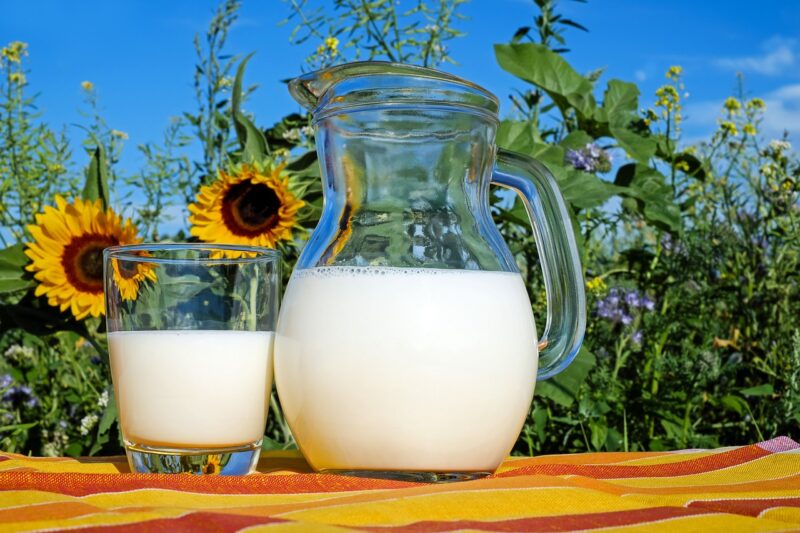
Nut milks have surged in popularity as a nutritious and dairy-free alternative to traditional cow’s milk. Whether you’re lactose intolerant, vegan, or simply curious about plant-based options, making your own nut milk is a simple, rewarding, and cost-effective endeavor. In this comprehensive guide, we’ll take you through everything you need to know to successfully create delicious nut milks at home.
1. Why Make Nut Milk at Home?
Making nut milk at home comes with a host of benefits compared to store-bought alternatives.
- Freshness and Flavor: The taste of homemade nut milk is far superior to most store-bought brands, which can be overly processed and contain preservatives. Homemade nut milk retains the nutty flavors and nutrients intact.
- Control Over Ingredients: When you make nut milk yourself, you have complete control over the quality and type of ingredients you use. This means no additives, sweeteners, or thickeners unless you choose to include them.
- Cost-effective: Purchasing nuts in bulk and making your own milk can be much cheaper than buying pre-packaged nut milk cartons. Moreover, you can customize the quantity according to your needs, minimizing waste.
- Nutritional Benefits: Homemade nut milk is rich in vitamins and minerals. For example, almond milk is packed with vitamin E, and hazelnut milk is high in healthy fats, fiber, and protein.
2. Basic Steps for Making Nut Milk
Making nut milk is a straightforward process that can be broken down into a few simple steps. Prepare to enhance your culinary skills with these basic instructions:
Step 1: Gather Your Ingredients
You will need:
- 1 cup of raw nuts (almonds, hazelnuts, cashews, or any nut of your choice)
- 4 cups of filtered water (adjust for desired consistency)
- Optional ingredients for flavor: 1 tablespoon of sweetener (like maple syrup or agave), a pinch of salt, or vanilla extract.
Step 2: Soak the Nuts
Soak your chosen nuts in fresh water for at least 4-12 hours. This process softens the nuts, making them easier to blend and aiding in digestibility. For almonds, a longer soak of around 12 hours yields the best results, whereas cashews can be soaked for a shorter duration of 4-6 hours.
Step 3: Drain and Rinse
After soaking, drain the nuts and rinse them under cold water to remove any substances released during the soaking process. This will ensure a cleaner flavor in your nut milk.
Step 4: Blend the Nuts and Water
In a high-speed blender, combine the soaked nuts and the filtered water. Blend on high for 1-2 minutes until the mixture looks creamy and smooth. If you’re using optional flavor ingredients, add them here and blend again for a few seconds.
Step 5: Strain the Mixture
To reach your desired nut milk consistency, strain the mixture using a nut milk bag, cheesecloth, or a fine-mesh sieve. Squeeze or press to extract as much liquid as possible. The leftover nut pulp can be reserved for other recipes, such as smoothies or baked goods.
Step 6: Store Your Nut Milk
Pour the strained nut milk into a clean glass container and store it in the refrigerator. Homemade nut milk typically lasts 4-5 days. Shake well before use, as separation can occur naturally over time.
3. Popular Variations of Nut Milk
While almond milk is the most common nut milk, there are numerous delicious variations you can experiment with:
Hazelnut Milk: Rich and flavorful, this milk pairs well with coffee or desserts.
Cashew Milk: Creamy and thick, it’s perfect for smoothies and creamy soups. Since cashews don’t require soaking for as long, they’re an excellent option for a quicker nut-milk endeavor.
Macadamia Milk: Smooth and subtly sweet, macadamia nut milk adds a luxurious touch to your morning coffee or smoothie.
Peanut Milk: For those who love peanut butter, this variation offers a unique take that goes well in smoothies and baking.
You can also experiment with blending different nuts together, such as almond and coconut, to create hybrid nut milks with delightful flavors.
4. Nut Milk Recipes You’re Sure to Love
To give you a head start, here are a couple of delightful nut milk recipes that you can easily make at home:
Vanilla Almond Milk:
– 1 cup raw almonds
– 4 cups filtered water
– 1-2 tablespoons maple syrup (to taste)
– 1 tablespoon pure vanilla extract
1. Follow the basic nut milk steps above, adding the sweetener and vanilla to your blender.
2. Strain the mixture and enjoy your delicious vanilla almond milk!
Chocolate Hazelnut Milk:
– 1 cup raw hazelnuts
– 4 cups filtered water
– 2-3 tablespoons cocoa powder
– 2 tablespoons sweetener (e.g., agave or maple syrup)
1. Blend all ingredients until smooth.
2. Strain and enjoy chilled or warmed for an indulgent treat that’s sure to be a hit.
5. Tips for Making Perfect Nut Milk
Here are some tips to enhance your nut milk-making experience:
- Adjust Consistency: Use less water for creamier milk or add more water for a thinner consistency. Experiment until you find your optimal mixture.
- Straining Techniques: If you desire a smoother consistency, re-strain the milk through a fine sieve or cheesecloth after the first straining.
- Sweetness Control: Taste your nut milk after blending and adjust sweeteners to match your preferences.
Finally, remember to save the leftover pulp! Nut pulp can be used in various recipes, including smoothies, energy bars, and baked goods, making it a zero-waste approach to nut milk production.
Conclusion
Making nut milk at home is a fun, cost-effective, and environmentally friendly alternative to store-bought options. With just a few ingredients, customized flavors, and a simple process, anyone can enjoy fresh, nutritious nut milk. Now that you have the tools and knowledge to get started, unleash your creativity and embark on your nut milk-making journey today! You’ll be amazed at the delicious flavors you can create and the health benefits you’ll gain along the way.






